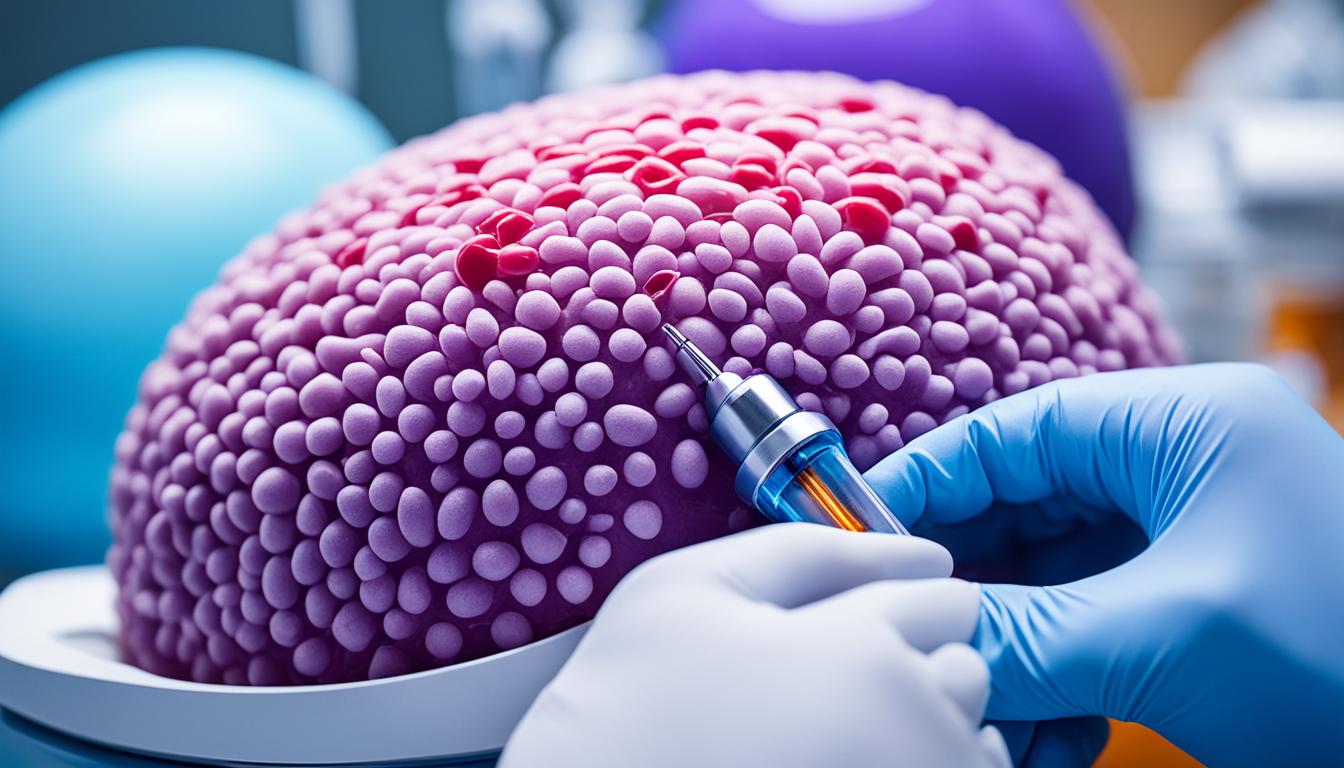Undescended testicle, or cryptorchidism, happens when testicles don’t move down into the scrotum during fetal growth. About 3-4% of full-term baby boys and 21% of premature ones have this issue (Sijstermans et al.; AUA report).
Most often, only one testicle isn’t where it should be. But, both testicles can be undescended in 10% of cases. Things like being born too early, low birth weight, Down syndrome, smoking by the mother while pregnant, and genital problems running in the family increase the chances of this problem (Sijstermans et al.; AUA report).
Not fixing undescended testicles can cause trouble having kids, testicular cancer, and painful twisting (AUA report; Chung et al.).
Key Takeaways:
- Undescended testicle, or cryptorchidism, is a condition where one or both testicles do not descend into the scrotum during fetal development.
- It affects around 3-4% of full-term male newborns and 21% of those born prematurely.
- Potential risk factors for cryptorchidism include premature birth, low birth weight, Down syndrome, maternal smoking during pregnancy, and a family history of genital development issues.
- If left untreated, undescended testicles can lead to fertility problems, testicular cancer, and testicular torsion.
Symptoms and Diagnosis of Undescended Testicle
Undescended testicles, also called cryptorchidism, have distinct symptoms and need special diagnostic procedures. It’s important to spot these signs early for the right treatment. This is a closer look at how undescended testicles can be found and diagnosed.
Symptoms of Undescended Testicle
A main symptom of an undescended testicle is the scrotum looking empty. This happens when one or both testicles don’t drop into the scrotal sac. The scrotum might also look smaller due to this absence. A healthcare provider can see these signs during an exam.
Other symptoms of undescended testicles include:
- Absence of one or both testicles in the scrotum
Diagnosis of Undescended Testicle
Doctors diagnose undescended testicles with a physical exam and maybe imaging tests. They can tell if a testicle is palpable (can be felt) or unpalpable during the exam.
A palpable undescended testicle might be in the inguinal canal. The doctor checks its position to plan the best treatment.
An unpalpable undescended testicle can’t be felt. In this case, tests like ultrasound or an MRI help find it for treatment planning.
| Types of Undescended Testicles | Description |
|---|---|
| Palpable Undescended Testicle | This type can be felt in the inguinal canal during a physical. |
| Unpalpable Undescended Testicle | Doctors can’t feel this type during a physical. More tests are needed to locate it. |
Knowing undescended testicle symptoms and getting a detailed check-up is key to managing it well. Doctors can find palpable undescended testicles by exam. But for unpalpable ones, they might need imaging tests to confirm.
Treatment Options for Undescended Testicle
The main way to treat undescended testicles is through orchidopexy. It’s a surgery to move the testicle(s) down into the scrotum. Doctors usually do this between a child’s 6 months to 18 months of age. It aims to avoid later problems like not being able to have children or cancer. During orchidopexy, a doctor makes a small cut in the groin or scrotum. They find the undescended testicle and fix it into place using stitches or mesh.
Orchidopexy is the best way to deal with undescended testicles. It works well and helps the testicle work better. It also lowers the chances of having problems because of the undescended testicle. It’s best to do this surgery as soon as possible for the best outcome.
Hormone Therapy for Undescended Testicle
Sometimes, doctors might try hormone therapy instead of surgery. They use Gonadotropin-releasing hormone (GnRH) for this. It can be given every day by shot or with an implant under the skin. The goals is to make the body produce luteinizing hormone (LH). This hormone helps pull the testicles down into the scrotum.
Hormone therapy can work for some cases. It’s often used for babies with both testicles undescended or with a certain kind of problem. But, it’s not clear how well this kind of treatment works in the long run.
Stem Cell Therapy for Undescended Testicle
There’s new hope in stem cell therapy for undescended testicles. This type of treatment uses stem cells to try and fix the testicular tissue that didn’t grow right. Stem cells might come from bone marrow or fat tissue.
Early research is showing good results with stem cell therapy. It seems to make the testicle work and help with having kids. But we still need more studies to say if this treatment is really safe and works well for undescended testicles.
Orchidopexy is the common treatment for undescended testicles. But hormone therapy and stem cell therapy are promising options. Talk to a doctor about which treatment is best for you or your child, based on their health.
Conclusion
Undescended testicle, also known as cryptorchidism, is a frequent condition. This needs early detection and treatment. The main treatment is surgery called orchidopexy. Also, scientists are looking into other treatments, like hormone or stem cell therapies.
It’s crucial to treat undescended testicles quickly. This helps lower the chance of infertility or cancer later. With ongoing research, treatments can get even better. And this offers hope for those with this issue.
The key is to find this condition early and treat it soon. Parents and doctors need to watch male babies for this. By acting fast, we can make sure those with undescended testicles lead healthier lives. And we can protect their future ability to have kids.

